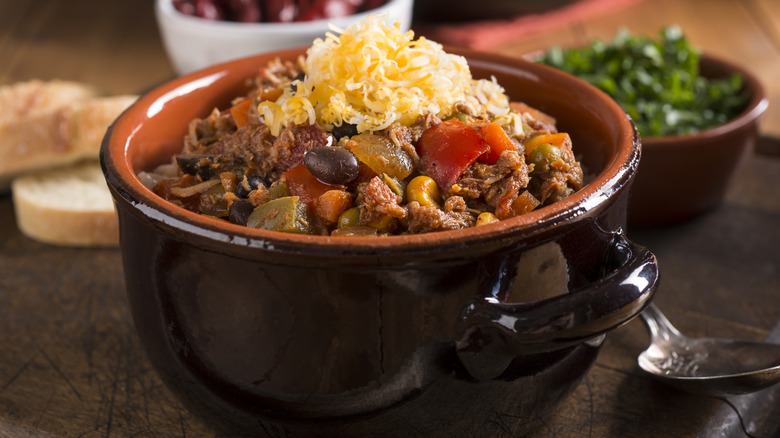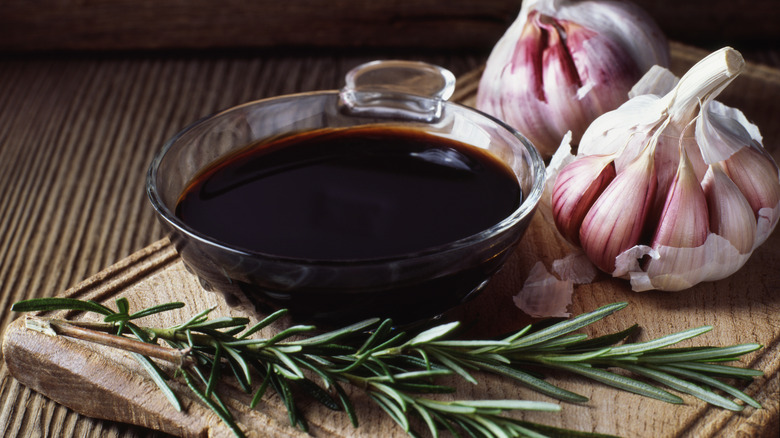Take Your Homemade Chili Up A Notch With This Tangy Pantry Staple
Chili is one of those dishes where everyone has their own secret ingredient, and all of them bring something special to the table — whether you're mixing chorizo with your ground beef to add some extra heat or adding liquid smoke for an award-winning bowl. But there's another ingredient you might not have considered, and according to Serge Krikorian, executive chef and managing partner at Vibrant Occasions Catering, it will engage multiple senses while elevating your chili to new levels.
"Balsamic vinegar is my secret weapon!" Krikorian told Food Republic. "The balsamic cuts through the richness, lifts up all those spices, and makes your mouth water before you even take a bite." While this might be a surprising choice for a meat and bean-based sauce, it makes sense when you consider how natural a pairing tomato and balsamic is, blending perfectly in dishes like caprese salads and honey-drizzled bruschetta.
Real balsamic vinegar is traditionally aged for a minimum of 12 years, even non-aged varieties have a mellow flavor and viscous texture, with a touch of sweetness and acidity that mingles with the tomato base to create a delightfully light, tangy, and, most importantly, subtle layer of flavor. Chef Krikorian isn't alone in this preference, Jamie Oliver also uses balsamic vinegar in his chili con carne recipe.
Timing and temperance are key to adding balsamic vinegar to chili
While balsamic vinegar is a delicious ingredient, it's also a strong one, capable of overpowering flavors if misapplied. That's why it's crucial to start small when adding it to your chili. "Just a little tablespoon or two for a big pot because you don't want it tasting like salad dressing[;] you want it whispering in the background," advised chef Serge Krikorian.
The timing of adding your balsamic in is also important. "I add a small splash about 30 minutes before serving but not too early or you lose that brightness," Krikorian informed us. This allows the flavors to infuse with the sauce as it cooks down without losing what makes it great.
Once you've tried that, you can experiment with other timings to see which suits your palate best. Some chefs prefer allowing the chili to cook, then adding the balsamic and cooking for another 10 minutes before serving while others add it as the last ingredient before bringing the chili to a boil and simmering in a partially-covered pot for an hour. At that point, the only question left will be what to serve it with: hard-crusted bread is perfect for sopping up the juice, basmati rice is always good, or you can take a page out of Cincinnati's book by eating it with spaghetti.


